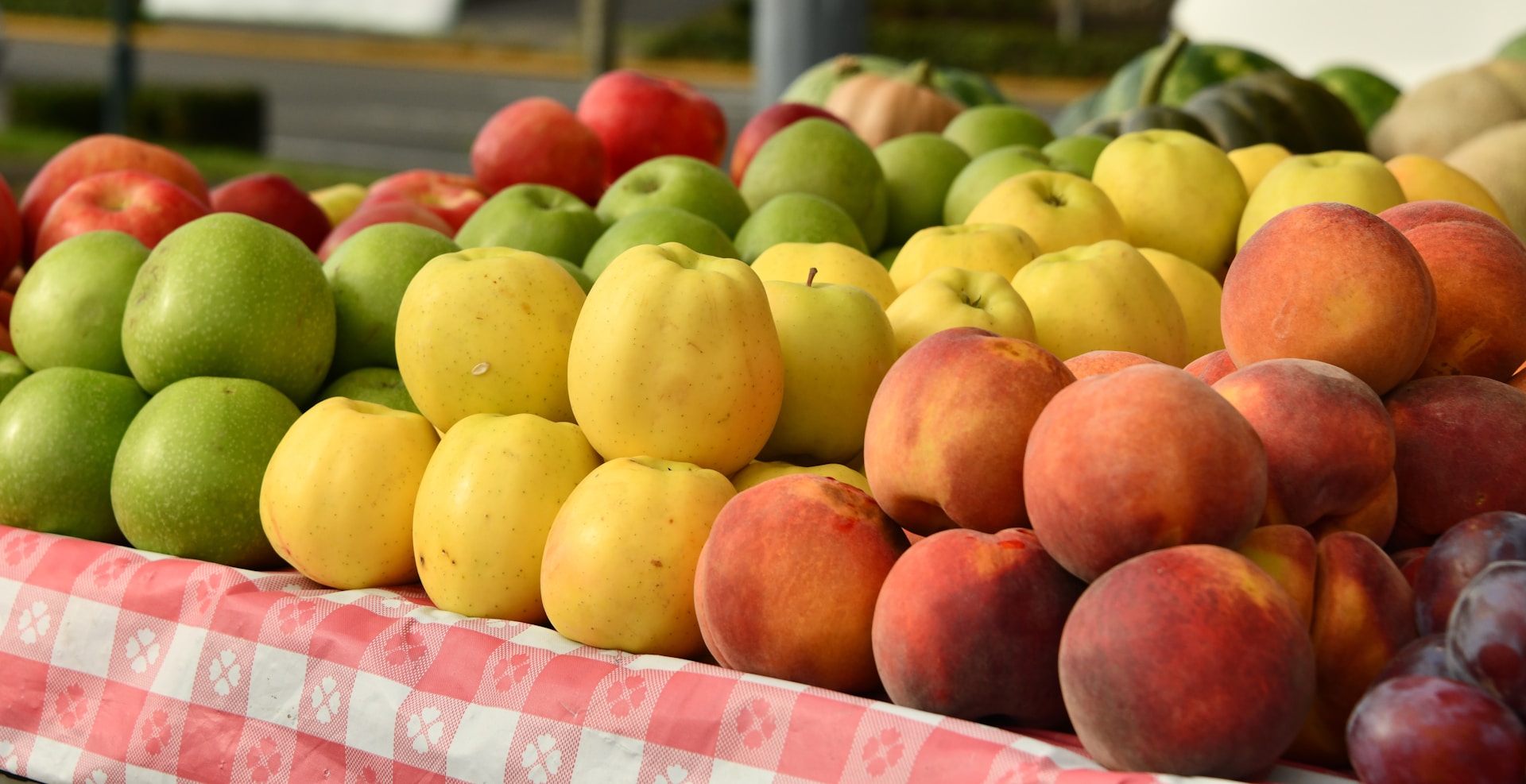Effective and efficient inventory management remains a critical aspect in all sectors, including produce distribution.
Inaccurate inventory records can result in out-of-stock scenarios, order cancellation and, ultimately, loss in profitability.
However, maintaining inventory accuracy comes with its own set of challenges including issues like product perishability.
By understanding and implementing some proven strategies, these hurdles can be mitigated.
This article intends to unpack some of the best practices in this area, offering insights to enhance operational success.
The goal is to empower businesses in the produce distribution sector to maintain accurate inventory levels, reduce waste and increase their bottom line.
Inventory Accuracy Best Practices In Produce Distribution
1. Regular scheduling of physical inventory counts
The process of regularly scheduled physical inventory counts is critical to maintain inventory accuracy in produce distribution.
Accuracy of inventory in the context of produce distribution refers to the consistency between the actual items in stock and the record maintained in the inventory management system.
One of the best practices to ensure the desired level of accuracy is to schedule a physical count of the inventory at regular intervals.
By physically counting the inventory on a regular basis, the chances of discrepancies between your records and the actual count are mitigated.
Consistency in inventory counts can result in a multitude of benefits, including improvement in order fulfillment, minimization of stockouts and overstocks, and enhancement in customer satisfaction.
For produce distribution, items are often perishable; therefore, maintaining accurate inventory records is crucial to ensuring that the perishable goods are managed effectively and do not go to wastage.
Physical counts allow you to identify any potential issues such as product spoilage, damage or theft, which can significantly affect inventory levels and the overall efficiency of your operation.
It’s important to weigh the frequency of inventory counts against the operational constraints of your organization – the goal should be to find the right balance between maintaining inventory accuracy and optimizing resource use.
Typically, a quarterly or biannual physical count might be appropriate, depending on the size and complexity of your operations.
However, conducting cycle counting, a process where a small subset of inventory is counted on a specific day and this cycle is repeated so all items in the inventory are eventually counted, could be a good alternative to comprehensive physical counting.
Utilize the data gathered from the physical counts to update your inventory records and make any necessary adjustments to your inventory management practices.
Ensure that the employees conducting the counts are trained properly and understand the importance of their task – their diligence can potentially make or break the success of your inventory management efforts.
The accuracy of counting can be vastly improved by implementing technology solutions such as barcoding and scanning, or by integrating your inventory management system with other key business software.
Remember, the goal of a regularly scheduled physical inventory count is to maintain inventory accuracy, prevent wastage, optimize resource use and ultimately improve the efficiency of your produce distribution.
To systematically schedule these counts and diligently follow them, will encourage a habit that could prove beneficial in the long run. After all, meticulous inventory management is undoubtedly the lifeline of a successful produce distribution business.
2. Utilize Barcoding and Scanning Technology
In Produce Distribution, inventory accuracy significantly contributes to the success of the business.
Therefore, it is critical to implement tools and systems which will help in managing product counts, one of which is leveraging barcoding and scanning technology.
This technology is an efficient method to ensure real-time stock availability and taking swift actions based on the data gathered.
In the fast paced environment of produce distribution, the real-time tracking capability provided by barcoding and scanning technology allows businesses to stay ahead of demand, reducing waste and optimizing profit.
As products move from farm to table, their path should be accurately tracked using barcodes that code essential data such as production date, pressure, location among other things.
Implementing barcoding and scanning ensures that this tracking is not only accurate but also efficient.
Scanners read the barcodes and instantly updates the information on the inventory management system, allowing for real-time inventory tracking.
This eliminates the need for manual input, reducing the chances of human error and increasing accuracy.
Besides, barcoding and scanning technology allows for better visibility of inventory, providing instant data about what is in stock and where it is, reducing search time and improving productivity.
It also provides a foundation for implementing a First-In-First-Out (FIFO) system necessary for perishable goods such as produce.
Extracting essential information from barcodes assists in maintaining the freshness of the products as well, as it warrants that older products are sold off before they expire.
Barcode technology can also contribute to improving the customer experience.
By ensuring that the products are always in stock, it counters scenarios of turning away customers because a particular produce is out of stock.
Lastly, barcode and scanning technology supports the efficient execution of recalls, if necessary, by identifying the exact batch and place of the product quickly.
This aspect is highly significant in the produce distribution industry considering the high rates of perishability and strict regulations surrounding food safety.
Incorporating barcoding and scanning technology into inventory management process is, therefore, an excellent approach to maintaining inventory accuracy in the world of produce distribution.
3. Implement real-time tracking system
In the realm of produce distribution, maintaining accurate inventory is of paramount importance.
Efficiency and effectiveness can significantly be increased by implementing a real-time tracking system.
This tool has the power to eradicate many common inventory issues faced in the industry, like overstocking and stockouts.
The implementation of a real-time tracking system ensures that data concerning stock levels is continuously updated and accessible.
For warehouses dealing with perishable items, this real-time data can ensure the most effective storage and usage of these items.
Since the primary purpose of such a system is to provide ongoing details and updates about stock levels, it substantially reduces the probability of errors occurring in manual inventory management.
A real-time tracking system provides detailed visibility into inventory, aiding in the prevention of both product wastage as well as lost sales due to out-of-stock situations.
This system incorporates automated data entry, which can significantly reduce the potential for human error.
Moreover, using real-time tracking can aid in forecasting, as accurate stock data can lend itself to better predictions of future stock needs.
n response to sudden changes in demand or supply, real-time inventory management allows businesses to act swiftly to such changes.
One of the key advantages of a real-time tracking system is stock visibility, which can enhance decision-making processes in inventory management.
The accessibility provided by this system allows for immediate action and decision-making based on current data, rather than relying on outdated reports.
A robust real-time tracking system provides valuable insight into the operational functionality of the supply chain, pinpointing potential areas of weakness that might need adjustment or correction.
Additionally, such a system provides significant cost savings in terms of the reduction in workforce hours that would otherwise be spent manually tracking inventory.
While implementing a real-time tracking system may require a significant initial investment, the resulting improvements in efficiency and reduction in lost products can quickly offset this cost.
By taking control of this every-area-impacting factor of the business, produce distributors empower themselves to manage their inventory with a higher degree of accuracy and efficiency.
4. Train staff on proper inventory procedures
The implementation of effective inventory practices within a produce distribution company cannot be successful without the input of well-trained staff.
In the world of produce distribution, keeping an accurate inventory is essential to avoiding food waste and meeting delivery deadlines.
It is not just about counting the goods in storage but also understanding how to use the company’s inventory management system.
Training staff on proper inventory procedures begins with helping them understand the importance of these procedures for the health of the company.
A staff member who understands why accurate inventory is crucial to the company’s success will be more motivated to perform their duties diligently and accurately.
Training can be more effective when it involves not just theoretical instruction but also real-time, hands-on practical exercises using your company’s specific inventory system.
These practical exercises improve employees’ confidence and abilities in conducting inventory activities, which contributes positively to inventory accuracy.
The training should also include education on the latest technological tools, such as barcoding and scanning technology, used in inventory management.
There should be continuous training programs to ensure staff are updated on any changes in the systems, technology or procedures.
Such training programs nurture a culture of consistent improvement and technological advancement in the organization, benefiting both the company and the employees.
Depending on the size of the company, it may be beneficial to create a team of ’Inventory Champions’ who are specially trained individuals.
These are the employees who have shown great skill and knowledge in inventory management and can be relied upon to lead others in maintaining inventory accuracy.
The ‘Inventory Champions’ may also serve as the go-to individuals for other staff members who need assistance with the inventory procedures.
Additionally, training should also focus on preventive measures to avoid errors, such as double counting, and provide solutions to common inventory problems.
Remember; good training is not a one-time event but a continuous process which ensures that all staff members are on the same page with regard to the importance and practices of accurate inventory procedures.
Implementing all these measures will ensure that inventory accuracy remains a key priority among the staff — ultimately leading to increased efficiency and profitability in the produce distribution company.
5. Maintain Proper Storage Arrangement and Rotation
For a produce distribution business to thrive, maintaining proper storage arrangement and rotation is crucial.
Correct storage arrangement not only enhances your inventory accuracy but also helps in preventing spoilage and loss of product.
Products such as fruits and vegetables are perishable commodities, and they lose their quality and value in case of improper storage or long periods of storage.
It is thus vital to establish a well-organized system of receiving, storing and shipping the produce.
Organizing spaces in a way that is logical and makes the most sense for the way the business operates is key to maximizing efficiency and maintaining freshness.
The concept of First in, First out (FIFO) is a practical system that is usually implemented in product rotation procedures in the produce industry.
With this plan, the products that have been in stock the longest are sold first, thereby reducing the amount of time they spend in storage and consequently chance of wastage due to spoilage.
Appropriate product rotation ensures that your inventory is always fresh, minimizing losses and increasing customer satisfaction.
Consistent documentation and labeling of the inventory can also be an essential aid in maintaining proper storage arrangements.
It assists in locating the products easily and also acknowledges records of batch numbers or dates which help further in the rotation process.
Ensuring ideal storage conditions is another element that enhances storage arrangement and rotation.
Factors like temperature, humidity and light can significantly affect the quality and lifespan of your produce.
Every product might require a different set of conditions to maintain its freshness and quality, it’s vital to closely monitor and control these conditions.
For instance, some fruits and vegetables require cooler storage while others need warmer conditions.
It is also essential to remember that certain goods emit gases that could hasten the spoiling process of other items if stored in the same space.
Understanding and implementing these practices can significantly boost the effectiveness of your inventory management in your produce distribution business.
The Bottom Line
Overall, thorough management of inventory is critical to the success and efficiency of any business.
Regular physical counts, the use of advanced technology such as barcoding and scanning, real-time tracking systems, staff training, and appropriate storage and rotation procedures are all essential strategies.
By implementing these steps, businesses can minimize loss, enhance accuracy, optimize storage space and effectively manage supplies, ultimately leading to increased productivity, cost savings and a more organized, streamlined operation.
Nevertheless, it’s important to note that the specific methods and systems utilized should be tailored to meet the unique needs and characteristics of each organization.




